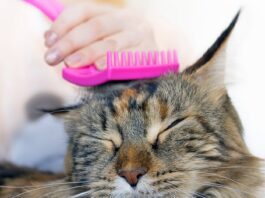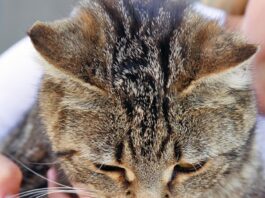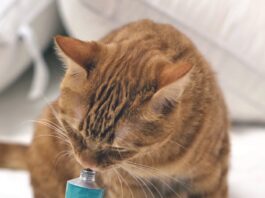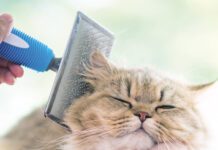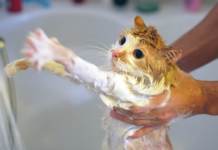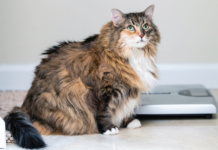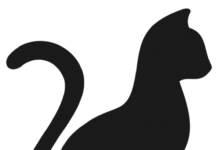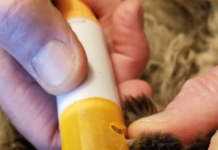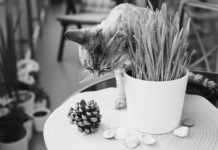Your Cat Can Love Grooming
Is your normally gorgeous cat looking more like an alley cat these days? For the most part, our feline friends keep themselves neat and...
Ingrown Claws—Ouch!
Most active cats keep their nails worn down by walking and sharpening them on scratching posts (and possibly—but hopefully not—your furniture). Typical kittens and...
5 Things: Bath Time for Kitty
Most cats don’t need a bath often, but when they do, it can be a daunting enterprise for both of you. These tips may...
Lumpy, Bumpy, Clumpy Coats
You’re petting your cat and you realize that her silky coat is not so silky anymore. Whether your attention has been grabbed by small...
Be Careful With Essential Oils
A webinar from the Pet Poison HelpLine by Charlotte Flint, DVM, DABT, raises more concerns about essential oils, which are concentrated volatile plant oils...
Get the Most Out of Eye Ointments
Bottles of eye drops and tubes of eye ointment are generally small because you don’t need much of these medications and having leftover...
Grinding Your Cat’s Nails
Nail care should be a part of your cat’s routine health maintenance. Many cats wear their nails down on their own, but others can...
Hairballs are Normal for Cats
Hairballs, also known as trichobezoars, are a fact of life for most cat fanciers. This is especially true if you have a long-haired cat, such as a Persian or domestic long-hair, but even domestic short hairs can suffer from hairballs.
Ask Elizabeth: March 2017
My 2-year-old cat, who we took in as a stray after gradually gaining his trust about a year ago, has been having a problem that I wonder if you can help with. He has started to pull his fur out in small cotton ball-sized clumps. I find these clumps all over the house, and its driving me crazy. He is an indoor/outdoor cat and there are no other pets or kids in the house. Can you provide some insight?
Geography’s Role in Feline Ear Infections
Ear infections are relatively uncommon in cats - infections of the external ear occur twice as often in dogs. However, you should be aware of these significant facts: A study shows that geography can determine if your cat is likely to develop an ear infection. Left untreated, an infection can become chronic, causing pain and irreparable damage to the ear canal or eardrum. You can become the first line of defense in identifying an ear infection. Simply check your cats ears by giving them a quick rub - something you probably do everyday. Whether your cat shows pleasure or discomfort is a clue to the ears condition.
Claws Reveal Cats’ Health Status
Cats depend on their claws to grip while climbing. They serve as weapons in a fight, hold their prey and release scent to declare ownership of your sofa. While many cats are fastidious about grooming, indoor kitties depend on their owners to keep their claws in top shape. They dont do enough digging and scratching on abrasive objects to keep the claws short.
The Number 1 Reason for Lackluster Coats
Fur, primarily made of the protein keratin, grows from follicles in the skin. While human follicles each grow a single hair, animal follicles may grow many. Each follicle has an oil gland to lubricate the skin and hair, and to keep the coat lustrous. If your cats coat turns dull and dry, you may suspect a medical problem and make a veterinary appointment. Meanwhile, you might also want to check the labels on his food.


